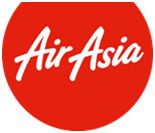Your fleet of vehicles is at the heart of your logistics and transportation success. It’s the reason why many businesses are investing more in their collections in terms of better management. With efficient systems in place, you can transform your operations into safer and more cost-efficient ones. It will, in turn, make your employees well-motivated and enhance your revenue generation as a business. However, you need to know the best practices to help you achieve better fleet management. Here are some practical ones to try.

Invest in Communication
The information-sharing means should always be practical. This is what makes teams work smoothly through the accurate sending of guidelines, changes, and reminders. Ensure you use the best communications systems available. The two-way radios are good since they work even for the vast fleets. These devices are unmatched since they allow instantaneous communication abilities. The coordination of routes and quick addressing of emergencies needs this greatly. There are times when mobile phones experience problems with network congestion or dead zones. This means drivers can experience challenges when moving to or along regions with poor network connectivity.
You need to, however, find the best dealers in fleet tracking systems as they’ll offer the best products. They tend to offer quality gadgets and services that ensure your daily activities efficiency. Visit their website and see the different products they offer. You can learn more here about the specific features favoring your business operations. Check if they offer solutions such as truck camera systems, 2-way dispatch radios, and GPS integration services. They also need an excellent customer support team for your fantastic experience.
Since the systems utilize dedicated frequencies, you’ll hardly experience interruption or slow communication with two-way radios. This fast sharing gives you the confidence to scale up your logistics and transportation activities. These radio systems tend to resist harsh conditions, making them more durable. The rough handling and extreme temperatures tend to damage or lower the performance of many devices in the long run. This is different with these modern equipment as their designs are made for such. This durability also means you’ll lower the repair and maintenance costs. It eliminates inconveniences that come from downtimes.
Train Your Team
After investing in the right resources, it’s easy to overlook the need to sharpen your team’s skills and knowledge. There is a general notion that hiring the top workers is all a business needs for progress. The truth is the fleet management landscape is ever-changing; hence, updating to the current times is crucial. Start with the basics, such as software use and data management. Everyone should have the ability to interpret the data that the system produces. Any confusion will result in dire consequences, such as wrong dispatch, which you hardly want as a company.
Sometimes, despite sound plans, things follow a different path. In such situations, your team should effectively execute emergency measures towards any technical issues within the system or when on the road. The drivers also need to understand everything regarding routes. Ordinarily, traffic issues are always there; hence, it’s only wise to give training on route optimization to avoid delays during deliveries. Focus also on the fuel efficiency measures since this will reduce operational costs. Similarly, make your drivers understand the best driving practices that ensure they’re always safe.
Define Your Goals and Objectives
Having purpose and direction is what drives fleets to success. As a business, therefore, look at your whole framework of work and create a plan with which everyone will align. This also helps decision-making since everyone knows what should happen in certain situations. Let the priority issue come first as you create the goals and key objectives. You want to have aspects such as improvement of safety and customer satisfaction at the top of the list. Consider allocating the right resources that will help you achieve this.
Make the progress measurable. With time, you’ll need to evaluate the metrics and how the business meets targets. Focus on aspects such as fuel consumption rates that you can easily adjust with time as your level of work activities changes. Some businesses try to separate the fleet management plans from the broader company’s strategy, which is where they go wrong. The two should work together for tangible results in the organization’s progress. Make your different departments come together when setting these objectives; this is where they’ll marry the strategies together.
Find the Right Fleet Vehicles
Your company needs the right vehicle for operational efficiency and cost control. The wrong types will make you have more deliveries or handle the goods carefully. Look at your industry when deciding on the vehicles to buy. You need to comply with the industry-specific requirement to avoid any legal implications.
For instance, if you’re in the construction industry or a long-distance logistics company, you need heavy-duty trucks. This will help you carry vast amounts of items at a go, reducing your fuel costs in the long run. If you do mismatches, you’ll experience challenges even with customers who report low satisfaction levels. Strive to champion environmental sustainability by picking automobiles low on emissions. It will make your carbon footprint low, creating a good brand image. Remember to maintain the vehicles so that their performance will always be high.
Choose the Right Fleet Management Software

A business needs to utilize modern tools since they make the activities seamless. You’ll find your teams saving time since this software can automate activities on repetitive tasks. However, you need to settle for the right tool. With the many options in the market, it can be tricky sometimes to decide which one to go for.
However, there are general aspects that can help. For instance, look at scalability as it helps you grow the business and continue enjoying the same experience. The software developers often make these adaptation features clear when taking the trials.
Check also for user-friendly interfaces, as this influences how easily your team will adapt to the new system. Whenever a program is simple to use, it’s less likely to make mistakes, which is good for your business. It also means that you won’t take more time training the employees on executing different functions with the tool. Consider the integration abilities. Your fleet management will benefit more when the different systems, such as fuel management and GPS tracking, can fit into the tool. It helps quick analysis and tracking of various aspects. You need also to get the proper support when doing so for there to be efficiency.
Your fleet management system needs to be in top form for your operations to be effective. This is why embracing the proper implementation strategies is crucial. Start by setting goals and buying the right resources, including software and communication systems. At the same time, focus on what will bring cost-efficiency and safety in the fleet management efforts.




Recent Comments